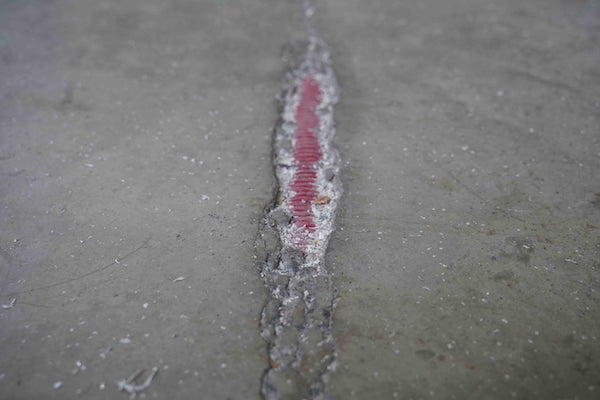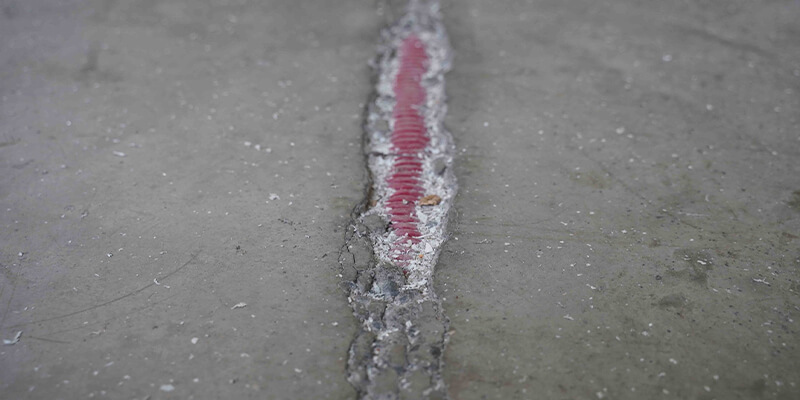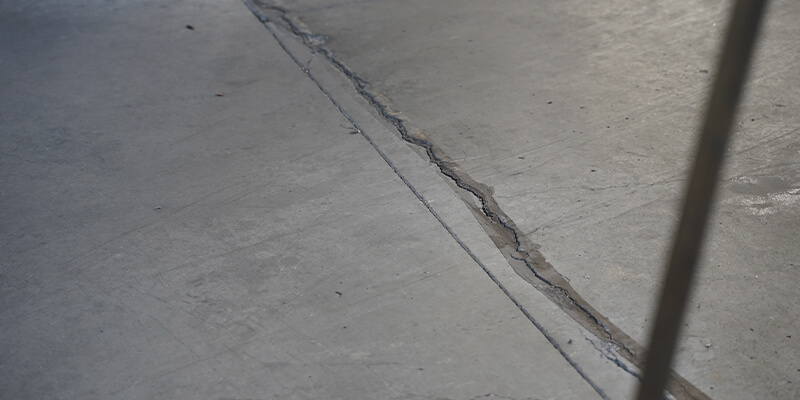Cracks in a concrete floor can be caused by accidental impacts, deterioration of the concrete, intense use of the area or even the movement of the floor itself.
We provide professional service throughout the UK and Europe.
It’s very common for cracks and fissures to appear in concrete floors which are submitted to usual work operations within the industrial and commercial sectors, over the course of time.
At BECOSAN® we are accustomed to dealing with these problems. We offer an optimal solution to repair cracks and fissures in industrial concrete floors and with our subsequent polishing treatment that hardens and seals the floor, avoiding future crack problems.
Likewise, to avoid these events, it is essential to proceed with the repair of cracks and fissures as soon as they are detected.
Repair works on small cracks (S-cracks) consist of a full-length cleaning and filling with BECOSAN® J+C Repair Kit. All other cracks must be cut vertically before filling with BECOSAN® Repair Kit. J+C.


Consult with one of our technicians to discuss the details and find solutions.
Depending on the size of the crack, BECOSAN® assigns a typology to them, which face different problems.
Repair works for S-Cracks consist in cleaning on their whole length and filling with BECOSAN® J+C Repair Kit. All other cracks need to be cut vertically prior to the filling with BECOSAN® J+C Repair Kit.

Minor crack (<2mm) that can be straight, curved or zigzag-shaped. It needs
to be repaired to prevent crumbling, which generally converts an S-Crack into an L-Crack.

Large crack that usually appears close to contraction or construction joints. It needs to be repaired as otherwise it
Will difficult or even make impossible traffic of forklifts, AGV’s, etc. It will lead into severe surface erosion of the surface and considerable damage of the concrete floor will be the consequence.

Medium sized crack (2-9mm) that can be straight, curved or zigzag- shaped. It needs to be repaired as the existing crumbling will lead into a detachment of concrete parts within the crack. The consequence will be major damage of the surface due to concrete spalling.

Very large crack (≥30mm) as a consequence of a not timely repaired XL-Crack to prevent further surface damage. These areas are very dangerous as they can cause heavy accidents. Areas with XXL-Cracks should not be used at all in warehouse or logistics operations≥
We have worked for large national and international companies.










Before deciding on a repair solution for your cracks it is important to understand why the cracks are there in the first place.
Cracks are mainly caused by:
Repairing cracks in concrete floors is a laborious and complicated job.
Even so, at BECOSAN®, we know that this is no reason to stop a client from carrying out their work; and therefore, we adapt to it promptly. We work by zones and in the hours required to not paralyze the company’s production.
In the case of interconnected cracks, there is a risk of spalling. That is, pieces of concrete can detach from the flooring, creating holes and leaving the concrete aggregate exposed.
Therefore, spalling is the next step after the cracks, as these begin to deteriorate mainly due to vehicle circulation.
The treatment of this type of damage is slightly similar, but due to its complexity, it requires eliminating the entire damaged area. Once this is done, it is possible to prepare the area where a sanding, polishing, and hardening treatment will subsequently be applied.
It consists of rebuilding the pavement, eliminating the loose material, and replacing it with a new one with improved characteristics.
Once we are aware of the problem, we will proceed to repair cracks in the concrete floors by milling, cleaning, and sealing.
These tasks are part of the set of renovation activities, through which superficial flooring problems are solved.
We start by milling the cracks or fissures and subsequently cleaning them. Next, concrete cracks are sealed with a resin component for interiors or polyurea for exteriors.
Sealing cracks in concrete floors avoids water and any other external substance to penetrate the concrete, thus helping to maintain its support capacity.
If you need more information, do not hesitate to contact us, one of our technicians will advise you by phone call or email.
Tell us about your floor. One of our specialists will get in touch to evaluate your needs and provide a no-obligation quotation.